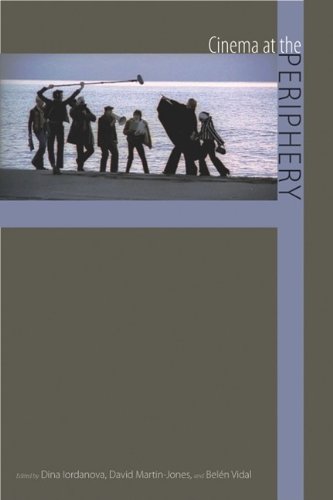

Most ebook files are in PDF format, so you can easily read them using various software such as Foxit Reader or directly on the Google Chrome browser.
Some ebook files are released by publishers in other formats such as .awz, .mobi, .epub, .fb2, etc. You may need to install specific software to read these formats on mobile/PC, such as Calibre.
Please read the tutorial at this link. https://ebooknice.com/page/post?id=faq
We offer FREE conversion to the popular formats you request; however, this may take some time. Therefore, right after payment, please email us, and we will try to provide the service as quickly as possible.
For some exceptional file formats or broken links (if any), please refrain from opening any disputes. Instead, email us first, and we will try to assist within a maximum of 6 hours.
EbookNice Team

Status:
Available0.0
0 reviewsFrom Iceland to Iran, from Singapore to Scotland, a growing intellectual & cultural wave of production is taking cinema beyond the borders of its place of origin-exploring faraway places, interacting with barely known peoples, & making new localities imaginable. In these films, previously entrenched spatial divisions no longer function as firmly fixed grid coordinates, the hierarchical position of place as "center" is subverted, & new forms of representation become possible. In Cinema at the Periphery, editors Dina Iordanova, David Martin-Jones, & Belén Vidal assemble criticism that explores issues of the periphery, including questions of transnationality, place, space, passage, & migration.
Cinema at the Periphery examines the periphery in terms of locations, practices, methods, & themes. It includes geographic case studies of small national cinemas located at the global margins, like New Zealand & Scotland, but also of filmmaking that comes from peripheral cultures, like Palestinian "stateless" cinema, Australian Aboriginal films, & cinema from Quebec. Therefore, the volume is divided into two key areas: industries & markets on the one hand, & identities & histories on the other. Yet as a whole, the contributors illustrate that the concept of "periphery" is not fixed but is always changing according to patterns of industry, ideology, & taste.
Cinema at the Periphery highlights the inextricable interrelationship that exists between production modes & circulation channels & the emerging narratives of histories & identities they enable. In the present era of globalization, this timely examination of the periphery will interest teachers & students of film & media studies.